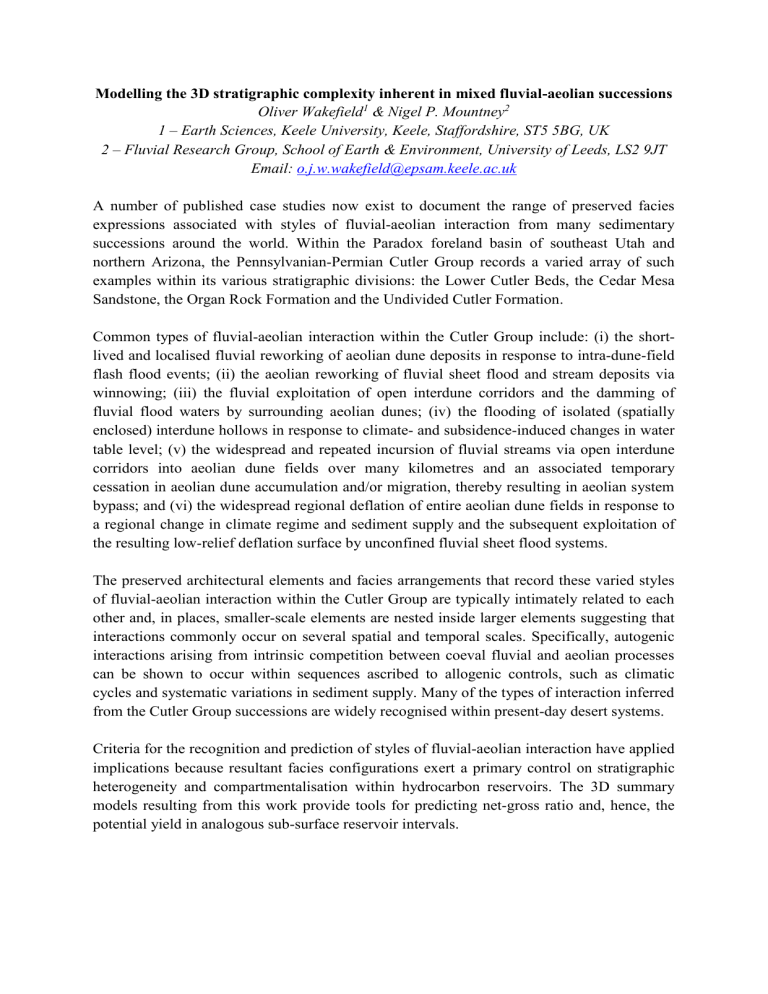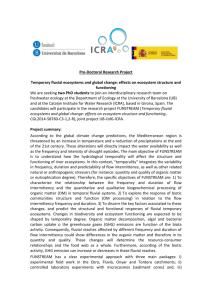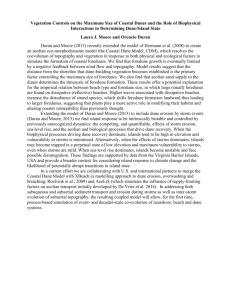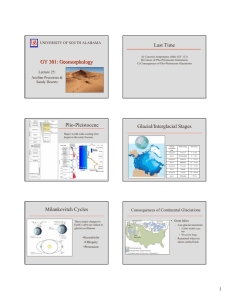BSRG 2008 Abstract

Modelling the 3D stratigraphic complexity inherent in mixed fluvial-aeolian successions
Oliver Wakefield
1
& Nigel P. Mountney
2
1 – Earth Sciences, Keele University, Keele, Staffordshire, ST5 5BG, UK
2 – Fluvial Research Group, School of Earth & Environment, University of Leeds, LS2 9JT
Email: o.j.w.wakefield@epsam.keele.ac.uk
A number of published case studies now exist to document the range of preserved facies expressions associated with styles of fluvial-aeolian interaction from many sedimentary successions around the world. Within the Paradox foreland basin of southeast Utah and northern Arizona, the Pennsylvanian-Permian Cutler Group records a varied array of such examples within its various stratigraphic divisions: the Lower Cutler Beds, the Cedar Mesa
Sandstone, the Organ Rock Formation and the Undivided Cutler Formation.
Common types of fluvial-aeolian interaction within the Cutler Group include: (i) the shortlived and localised fluvial reworking of aeolian dune deposits in response to intra-dune-field flash flood events; (ii) the aeolian reworking of fluvial sheet flood and stream deposits via winnowing; (iii) the fluvial exploitation of open interdune corridors and the damming of fluvial flood waters by surrounding aeolian dunes; (iv) the flooding of isolated (spatially enclosed) interdune hollows in response to climate- and subsidence-induced changes in water table level; (v) the widespread and repeated incursion of fluvial streams via open interdune corridors into aeolian dune fields over many kilometres and an associated temporary cessation in aeolian dune accumulation and/or migration, thereby resulting in aeolian system bypass; and (vi) the widespread regional deflation of entire aeolian dune fields in response to a regional change in climate regime and sediment supply and the subsequent exploitation of the resulting low-relief deflation surface by unconfined fluvial sheet flood systems.
The preserved architectural elements and facies arrangements that record these varied styles of fluvial-aeolian interaction within the Cutler Group are typically intimately related to each other and, in places, smaller-scale elements are nested inside larger elements suggesting that interactions commonly occur on several spatial and temporal scales. Specifically, autogenic interactions arising from intrinsic competition between coeval fluvial and aeolian processes can be shown to occur within sequences ascribed to allogenic controls, such as climatic cycles and systematic variations in sediment supply. Many of the types of interaction inferred from the Cutler Group successions are widely recognised within present-day desert systems.
Criteria for the recognition and prediction of styles of fluvial-aeolian interaction have applied implications because resultant facies configurations exert a primary control on stratigraphic heterogeneity and compartmentalisation within hydrocarbon reservoirs. The 3D summary models resulting from this work provide tools for predicting net-gross ratio and, hence, the potential yield in analogous sub-surface reservoir intervals.








